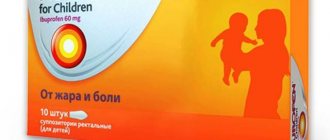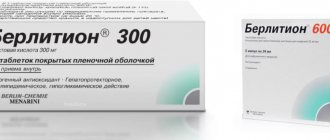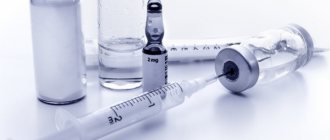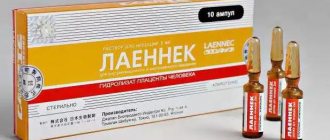Lavomax is a Russian-made drug for the treatment and prevention of acute respiratory viral infections and influenza. The Russian-made drug Lavomax® has established itself as an excellent remedy for the treatment and prevention of ARVI and influenza. As a result of foreign studies, the effectiveness of the drug was also confirmed, however, as an interferon inducer, that is, an immunomodulator. How to take the medicine correctly? What dosage is recommended in the instructions for the drug?
Composition and release form
For 1 tablet 125 mg:
- Active components: tilorone dihydrochloride - 125 mg.
- Excipients: magnesium hydroxycarbonate (heavy magnesium carbonate) - 69 mg, povidone K30 - 4 mg, calcium stearate - 2 mg;
- Shell: sucrose - 158.11 mg, povidone K-17 - 5.65 mg, copovidone - 0.44 mg, magnesium hydroxycarbonate (light magnesium carbonate) - 25.7 mg, titanium dioxide - 1.2 mg, colloidal silicon dioxide (Aerosil A-380) - 1 mg, dye quinoline yellow - 0.09 mg, sunset yellow dye - 0.01 mg, macrogol-6000 - 6 mg, beeswax - 0.15 mg, liquid paraffin - 0.15 mg, talc - 1.5 mg.
3, 4, 6 or 10 tablets per blister pack. One or two blister packs along with instructions for use of the medicinal product are placed in a cardboard pack.
Pharmacodynamics and pharmacokinetics
After oral administration of a single dose of Lavomax, intestinal epithelial cells, T-lymphocytes, granulocytes, hepatocytes and neutrophils produce interferon. The greatest degree of production occurs according to the following scheme: intestines - liver - blood. As a result, brain stem cells are activated, antibodies are formed, and the degree of immunosuppression is reduced. In addition, the T-helper/T-suppressor ratio is restored, and the reproduction of pathogenic viruses is suppressed.
Tiloron is quickly adsorbed from the digestive canal, penetrates the bloodstream, and is distributed among cells injured by the pathogenic virus. The bioavailability indicator after oral administration is 60%, binding to blood plasma proteins reaches 80%. The half-life of Lavomax lasts up to 2 days. Tiloron does not biotransform and does not accumulate in the body. The drug is excreted unchanged in feces and urine.
Pharmacological properties
Pharmacological action - immunomodulatory, antiviral.
Pharmacodynamics
Tilorone stimulates the formation of α-, β-, γ- and λ-interferons in the body. The main producers of interferon in response to the administration of tilorone are intestinal epithelial cells, hepatocytes, T-lymphocytes, neutrophils, etc. granulocytes.
After oral administration, the maximum production of interferon is determined in the sequence - intestines-liver-blood after 4-24 hours.
Tiloron has an immunomodulatory and antiviral effect. Induces the synthesis of interferon in human leukocytes. Stimulates bone marrow stem cells, enhances antibody formation, reduces the degree of immunosuppression, restores the T-helper / T-suppressor ratio.
Effective against various viral infections, including influenza viruses, other acute respiratory viral infections, hepatitis viruses and herpes viruses. The mechanism of antiviral action is associated with inhibition of the translation of virus-specific proteins in infected cells, as a result of which viral reproduction is suppressed.
Pharmacokinetics
After oral administration, Tilorone is rapidly absorbed from the gastrointestinal tract. Bioavailability is 60%. About 80% of tilorone is bound to plasma proteins.
Tilorone is excreted almost unchanged through the intestines (70%) and through the kidneys (9%). The half-life is 48 hours. Tiloron does not undergo biotransformation and does not accumulate in the body.
LAVOMAX: instructions, reviews, analogues, price in pharmacies
An interferon inducer, the drug Lavomax , has an immunomodulatory and antiviral effect.
The active ingredient of the drug – tilorone – helps to increase the production of endogenous interferon. At the same time, in response to the introduction of tilorone into the body, the amount of all three types of interferon increases, namely alpha, beta and gamma interferons. When using the drug Lavomax, the synthesis of interferon in the cells of the liver and intestines, as well as the synthesis of interferon in neutrophils and T-lymphocytes, significantly increases. The maximum release of interferon occurs after oral administration along the intestinal-liver-blood chain and is determined within 4-24 hours.
In addition, taking the drug Lavomax leads to stimulation of bone marrow cells and increases the formation of antibodies. Tilorone leads to normalization of the number of T-helpers and T-suppressors in the human body. The virostatic effect of the drug extends to various types of viruses, including viruses that cause respiratory infections (rhino-, adenoviruses, etc.
), influenza, parainfluenza, herpes simplex and hepatitis viruses. The antiviral effect of tilorone is due to the inhibition of viral reproduction in the cells of the body. The drug, after oral administration, is well absorbed from the gastrointestinal tract. The degree of binding to plasma proteins reaches 80%.
The drug is not metabolized in the body and is excreted unchanged mainly in feces and some (about 9%) in urine. There was no accumulation of the drug in the body. The half-life is 48 hours.
Mode of application
Lavomax is recommended to be taken after meals with a sufficient amount of liquid. The duration of the course of treatment and dose are selected by the attending physician individually. Usually prescribed to adults: For the prevention of viral hepatitis A: 125 mg once a week.
The duration of the preventive course is 6 weeks.
For the treatment of viral hepatitis A: on the first day of therapy with Lavomax , 125 mg is prescribed 2 times, starting from the second day, 125 mg is taken every 48 hours.
During the course of treatment, the patient must take 10 tablets of the drug.
For the treatment of acute hepatitis B: on the first and second days of therapy with Lavomax , 125 mg is prescribed once a day, after which 125 mg is taken every 48 hours.
During the course of treatment, the patient must take 16 tablets. In case of prolonged course of hepatitis B, 2 times 125 mg are prescribed on the first day, and starting from the second day of treatment, 125 mg every 48 hours.
The course of treatment is 20 tablets.
For the treatment of chronic hepatitis B: the therapeutic dose is 20 tablets, which are taken according to the following regimen: the first two days, 250 mg, then the drug is taken at 125 mg every 48 hours.
After the patient has finished taking 20 tablets according to this regimen, they switch to maintenance therapy of 125 mg once a week. A course of treatment with maintenance doses of 10 to 20 tablets. The total course dose of the drug is usually up to 5 g of tilorone (40 tablets).
Treatment can last up to six months, depending on laboratory test results reflecting the dynamics of the disease.
For the treatment of acute hepatitis C: on the first and second days of treatment with Lavomax , take 125 mg once a day, then switch to taking 125 mg of the drug every 48 hours. The course dose is 20 tablets.
For the treatment of chronic hepatitis C: the therapeutic dose is 20 tablets, which are taken according to the following regimen: the first two days, 250 mg, then the drug is taken at 125 mg every 48 hours. After the patient has finished taking 20 tablets according to this regimen, they switch to maintenance therapy of 125 mg once a week.
The course of treatment with maintenance doses is 20 tablets. The total course dose of the drug is usually up to 5 g of tilorone (40 tablets). Treatment can last up to six months, depending on laboratory test results reflecting the dynamics of the disease.
For the treatment of acute respiratory diseases and influenza in adults, 125 mg is prescribed once a day in the first two days of the disease, then 125 mg is taken every 48 hours. The course dose is 750 mg (6 tablets). To prevent acute respiratory diseases and influenza during seasonal epidemics, take 125 mg of the drug once a week for 6 weeks.
For the treatment of herpetic and cytomegalovirus infections: for the first two days of treatment, take 125 mg once a day, then take 125 mg every 48 hours.
The course dose is 2.5 g (20 tablets). For the treatment of chlamydial infections: for the first two days of treatment, take 125 mg once a day, then take 125 mg every 48 hours. Course dose – 1.25 g (10 tablets).
Patients with neuroviral diseases in complex therapy are prescribed Lavomax on the first and second days, 125-250 mg 1 time per day, then switch to taking 125 mg every 48 hours. The course of treatment usually lasts from 2 to 4 weeks.
It is not recommended to exceed the dose of 2.125 g (17 tablets) during the course of treatment, the minimum course dose is 1.25 g (10 tablets).
For the treatment of influenza and acute respiratory diseases in children over 12 years of age, Lavomax 125 mg 1 time per day for 1; 2 and 4 days from the onset of the disease. The course dose is 375 mg.
For complications after influenza and acute respiratory diseases in children over 12 years of age, 125 mg is prescribed 1 time per day for 1; 2; 4 and 6 days from the onset of the disease. The course dose should not exceed 500 mg.
Indications for use
In adults:
- treatment and prevention of influenza and other acute respiratory viral infections;
- as part of complex therapy for herpes infection, cytomegalovirus infection;
- as part of complex therapy of urogenital and respiratory chlamydia, in complex therapy of non-gonococcal urethritis;
- as part of complex therapy for viral hepatitis A, B, C;
- as part of complex therapy of pulmonary tuberculosis;
- as part of complex therapy of infectious-allergic and viral encephalomyelitis.
The drug "Lavomax" should not be given to a child!
Despite the popularity of antiviral drugs, many of these pharmacological drugs are strictly prohibited for use in early childhood. The danger is that if the immune system is not fully formed, stimulants can have a negative effect. Excessive production of leukocytes of various formations is a risk of developing acute leukemia.
In this regard, it is worth remembering that the drug “Lavomax” should absolutely not be given to children. If it is necessary to take an antiviral drug, you should consult a pediatrician who will recommend a safe and effective treatment regimen. Lavomax can cause more harm to a child than it brings potential benefit. And every modern parent should know this.
If you have questions for your doctor, please ask them on the consultation page. To do this, click on the button:
Ask a Question
Related Posts
- Painkillers for otitis media in children and adults
- The use of Lugol in the treatment of sore throat
- Sprays for the treatment of sore throat in children and adults
- "Sumamed" for sore throat in children and adults
Directions for use and doses
The drug is taken orally after meals.
- When treating influenza and other acute respiratory viral infections: in the first two days of illness, 125 mg, then after 48 hours, 125 mg. The course dose is 750 mg (per course of treatment - 6 tablets of 125 mg each).
- For the prevention of influenza and other acute respiratory viral infections: 125 mg once a week for 6 weeks (per course of treatment - 6 tablets of 125 mg).
- For the treatment of herpetic and cytomegalovirus infections: the first two days, 125 mg, then after 48 hours, 125 mg. The course dose is 1.25-2.5g (per course of treatment - 10-20 tablets of 125 mg each).
- For urogenital and respiratory chlamyliosis, non-gonococcal urethritis: the first two days, 125 mg, then after 48 hours, 125 mg. The course dose is 1.25 g (per course of treatment - 10 tablets of 125 mg each).
- For the treatment of viral hepatitis A: the first day, 125 mg 2 times, then 125 mg every 48 hours. The course dose is 1.25 g (per course of treatment - 10 tablets of 125 mg each).
- For the treatment of acute hepatitis B: the first and second days, 125 mg, then 125 mg after 48 hours. The course dose is 2 g (for a course of treatment - 16 tablets of 125 mg each), for protracted hepatitis B - 125 mg 2 times a day on the first day, then 125 mg after 48 hours. The course dose is 2.5 g (per course of treatment - 20 tablets of 125 mg each).
- For chronic hepatitis B: the initial phase of treatment (2.5 g) - the first two days, 125 mg 2 times a day, then 125 mg after 48 hours. Continuation phase (from 1.25g to 2.5g) - 125 mg per week. The course dose of Lavomax is from 3.75 to 5 g (per course of treatment - from 30 to 40 tablets of 125 mg), duration of therapy is 3.5–6 months, depending on the results of biochemical, immunological, morphological studies, reflecting the degree of activity of the process.
- For acute hepatitis C: the first and second days, 125 mg, then 125 mg after 48 hours. The course dose is 2.5 g (per course of treatment - 20 tablets of 125 mg each).
- For chronic hepatitis C: the initial phase of treatment (2.5 g) - the first two days, 125 mg 2 times a day, then 125 mg after 48 hours. Continuation phase (2.5g) - 125 mg per week. The course dose of Lavomax is 5 g (per course of treatment - 40 tablets of 125 mg), duration of therapy - 6 months, depending on the results of biochemical, immunological, morphological markers of the activity of the process.
- As part of complex therapy for pulmonary tuberculosis: the first two days, 250 mg, then 125 mg after 48 hours. The course dose is 2.5 g (per course of treatment - 20 tablets of 125 mg each).
- As part of complex therapy for infectious-allergic and viral encephalomyelitis: 125–250 mg per day for the first 2 days of treatment, then 125 mg after 48 hours. The dose is set individually, the course of treatment is 3–4 weeks.
How does Lavomax work for ARVI and influenza?
In order to understand the mechanism of action of Lavomax for influenza, ARVI and the need for its use, it is worth knowing what effect viruses have on the human body.
Interaction of viruses with cells of human target organs
- The human influenza virus infects epithelial cells of the upper respiratory tract. Once in the nasal cavity, the viral particle binds to the corresponding receptor of the human cell, and then penetrates inside, beginning to parasitize it, forcing it to produce RNA molecules for the reproduction of its offspring. The cell becomes a “factory” for the production of new virions. The “spent” epithelium dies, marking the beginning of clinical manifestations.
Human flu causes pathological changes only in the upper respiratory tract, so the surge in incidence of this strain is not as deadly to humans as swine or bird flu. The causative agent of human influenza can lead to pneumonia in individuals who are carriers of Staphylococcus aureus.
Staphylococcus aureus is an opportunistic microorganism, so its frequency of occurrence in humans is very high.
- Swine and bird flu viruses interact at the cellular level in the same way, but they spread throughout the human body. That is why epidemics and pandemics caused by these strains claim the lives of millions of people on the planet. The causative agents of swine and bird flu have an affinity for the tissue of the lungs, kidneys, pancreas and testicles. A few hours or days after infection, viral interstitial pneumonia may develop, death from which occurs within 2-3 days. Several years after the illness, the development of diabetes mellitus, glomerulonephritis, and male infertility is often noted.
- The causative agents of ARVI that determine the epidemiological season are represented mainly by rhinoviruses, adenoviruses, respiratory syncytial viruses and parainfluenza viruses. Their principle of action is either parasitism or the death of host cells. The distribution area is represented by the following organs: conjunctiva of the eye, nasal mucosa, tonsils, lymphoid formations of the nasopharynx. Most often, such infections occur in a mild form, but in some cases they can be complicated by otitis, sore throat, sinusitis, bronchitis, due to the addition of a secondary bacterial infection.
- The family of herpes viruses, which become active during the cold season, poses no less a danger to humans than the flu. Herpes simplex viruses, cytomegaloviruses and Epstein-Barr virus are the main representatives of this family, providing the epidemiological season. Their peculiarity is that upon initial encounter, the virion DNA is integrated into the genome of the host cell and remains with it for life. Pathogens are capable of influencing a person’s immunity, weakening it, for the purpose of their own preservation. These pathogens attack nerve cells, liver, brain and many other organs. Epstein-Barr virus is associated with chronic fatigue syndrome.
Influenza viruses infect human cells, causing them serious harm
The response of the human immune system to the introduction of a virus
In the mechanism of the immune response, innate immunity is of primary importance, which is the first to begin the fight against the pathogen. The next thing that comes into play is acquired immunity.
- The main representatives of innate immunity are a group of interferons produced by leukocytes. Interferon has a powerful antiviral effect. By activating certain cellular mechanisms, it causes the production of enzymes that destroy viral RNA or DNA and block the ability of the human cell to produce proteins for the pathogen. In addition, interferon triggers apoptosis - the destruction of infected epithelial cells. An equally important function is the activation of representatives of the acquired immune system, namely lymphocytes.
- Acquired immunity reflects the degree of adaptation of the human body to the penetration of an infectious agent. It is represented by antibodies and lymphocytes (humoral and cellular immunity, respectively). Antibodies block the spread of the pathogen and, together with cell enzymes, destroy viruses. Lymphocytes recognize and cause the death of virions.
We also recommend: Medicines for influenza and ARVI
Thus, the cooperative action of all components of immunity during a viral attack becomes obvious. Unfortunately, not every person can boast of a mild course of seasonal infection. In such cases, it is worth considering the issue of prophylactic and therapeutic use of immunomodulators.
Seasonal infection can be very severe under some circumstances
Rationale for the use of Lavomax for the prevention of influenza and ARVI
Lavomax is a drug that causes the production of interferon by leukocytes in the human body. The immune system works on the principle of “scales”: a load on one pan activates the entire system. When using an interferon inducer, the functional activity of the immune system as a whole ultimately changes.
Based on the above, it becomes clear that the main danger of viral infections lies in complications.
Action of Lavomax when used:
- The drug prevents the development of influenza interstitial pneumonia, which is inherently considered fatal. Such pneumonia is treated with the expensive antiviral drug Tamiflu, which is not available in all hospitals. Therefore, neglecting prevention during the flu season can cost a human life. Lavomax as a treatment for swine and bird flu will also help avoid the future development of diabetes mellitus and glomerulonephritis.
- The immunomodulator prevents the addition of a secondary infection, thereby preventing the development of otitis media, sinusitis, bronchitis, bacterial pneumonia and other diseases.
- In the fight against herpes viruses, modulating agents are indispensable: these pathogens reduce the natural production of interferon, reducing the immune response. In a non-immune organism, herpes infection can lead to severe damage to the nervous system and internal organs.
Who should use Lavomax?
- Persons who suffer from ARVI more than 5 times a year or pneumonia 3 or more times a year.
- In the presence of chronic infectious diseases (tuberculosis, CMV, recurrent herpes simplex, streptococcal infections, chronic tonsillitis and rhinosinusitis, adenoiditis, otitis, chronic obstructive pulmonary disease and others).
- For smokers.
We also recommend: How to treat flu with high fever
Two reasons to take Lavomax:
- Since interferon is the first to be included in the fight against the pathogen, care should be taken in advance to ensure that its quantity is optimal at the time of meeting the pathogen. Then the infection will be mild.
- By using an immunomodulator, a person ensures a normal immune response, thereby preventing complications.
Lavomax prevents the development of pneumonia
Therefore, Lavomax for the prevention of influenza and other viral infections is taken as follows:
- In the absence of illness, in order to produce interferon in advance to alleviate the course of the infection (the most optimal use is in November-December).
- In the first hours/days of illness to prevent complications.
It should be remembered that the medicine for influenza and ARVI Lavomax does not prevent infection, but contributes to a milder course of infection and the prevention of complications!
special instructions
Use during pregnancy and lactation
The use of Lavomax during pregnancy and lactation is contraindicated.
Interaction with alcohol
No clinically significant interaction of Lavomax with alcohol has been identified.
Impact on the ability to drive vehicles and other mechanical means
The use of the drug does not affect the ability to drive vehicles or engage in other potentially hazardous activities that require increased concentration and speed of psychomotor reactions.
Contraindications for taking Lavomax and interaction with alcohol
It’s worth saying right away that Lavomax and alcohol are not compatible. Such an interaction can lead to serious complications, such as toxic hepatitis, chronic renal failure, and allergic reactions.
Taking Lavomax during pregnancy and breastfeeding is also strictly prohibited, since the effect on the developing organism has not been sufficiently studied at present.
There are other contraindications for Lavomax, among which the following conditions are worth highlighting:
- childhood and adolescence up to the age of 18;
- autoimmune conditions accompanied by excessive production of interferon groups;
- diabetes;
- decreased glucose tolerance;
- individual intolerance and hypersensitivity.
Side effects may occur in the form of mild chills, muscle pain, increased body temperature, and decreased mood.












